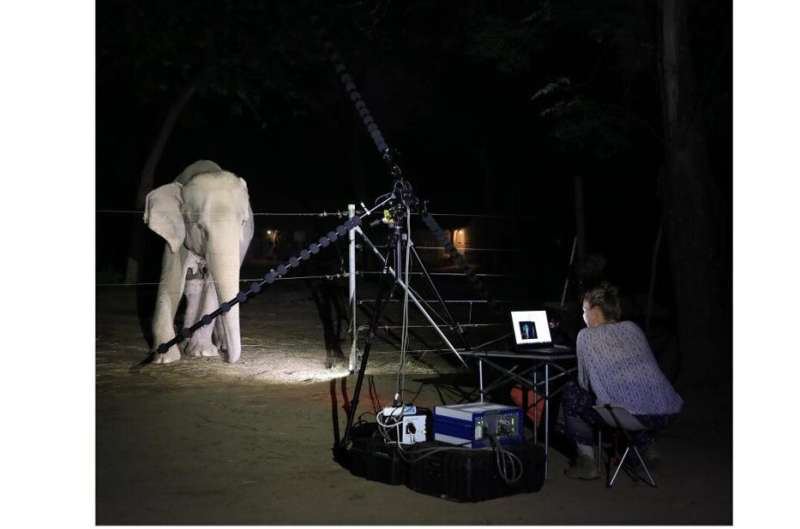Asian elephants shown to 'buzz' their lips to squeak

Everybody knows that elephants trumpet. Over the past decades research at the University of Vienna has mainly studied the elephants' low-frequency rumble. Its fundamental frequency reaches into the infrasonic range below the human hearing threshold. This call is produced by the elephant´s massive vocal folds. Much less was known about how elephants produce their higher pitched sounds, the trumpets and squeaks.
The following rule generally applies to sound production in mammals: the larger the vocal fold, the lower the calls' fundamental frequency. Conversely, the size of the vocal folds sets an upper limit to the fundamental frequencies that can be reached. The high-pitched squeak that Asian but not African elephants produce when aroused do not fit within that spectrum.
In her recent study Veronika Beeck, who is part of the FWF doctorate school Cognition and Communication at the Department of Behavioural and Cognitive Biology at the University of Vienna and her supervisor Angela Stöger, together with Gunnar Heilmann and Micheal Kerscher from gfai tech, Berlin, studied the squeak sounds of Asian elephants in Nepal.
The researchers used an acoustic camera with an array of 48 microphones that visualizes sounds in colors similar to a thermic camera. In this way the sound source was precisely located. "Our images clearly demonstrate that the squeaks are emitted by the mouth and not the trunk," Beeck explains.
According to the researcher's theory, the Asian elephants produce squeaks by pressing air through their tensed lips inducing the lips' vibration. This technique is simmilar to the human brass player's lip buzzing to produce a complex sound whose harmonic overtones are subsequently resonated by the instrument, resulting in its characteristic brassy sound. "Apart from human brass players this technique of lip buzzing to produce sounds has, to our knowledge, not been described in any other animal species and is thus considered unique in the animal kingdom," says Beeck.
The elephants' iconic trumpet, on the other hand, is produced by a blast of air through the trunk. Here again, however, the vibrating anatomic sound source is not yet conclusively studied.
This new evidence further highlights the elephants' flexibility in sound production. A few years ago, Angela Stöger-Horwath showed that elephants are capable of learning novel sounds. An Asian elephant in a Korean Zoo, by imitating his trainer, learned to speak some words in Korean. Since only a few elephants in this recent study squeaked, the researchers suggest that squeaks might be learned, too.
More information: Veronika C. Beeck et al, A novel theory of Asian elephant high-frequency squeak production, BMC Biology (2021). DOI: 10.1186/s12915-021-01026-z
Journal information: BMC Biology
Provided by University of Vienna





















